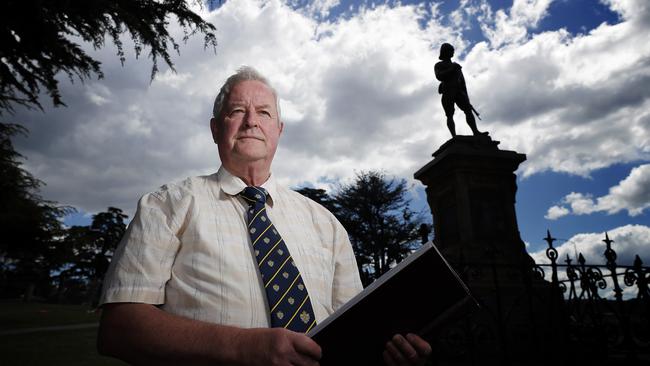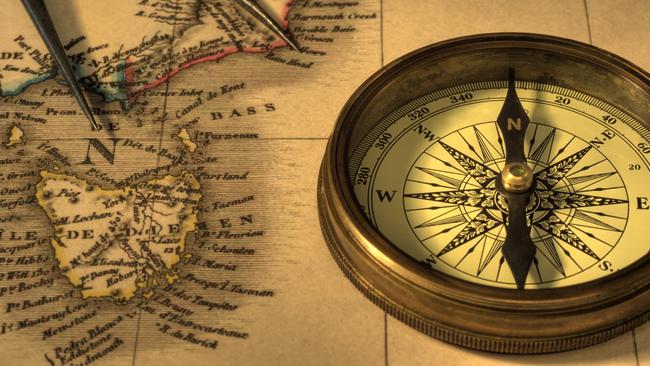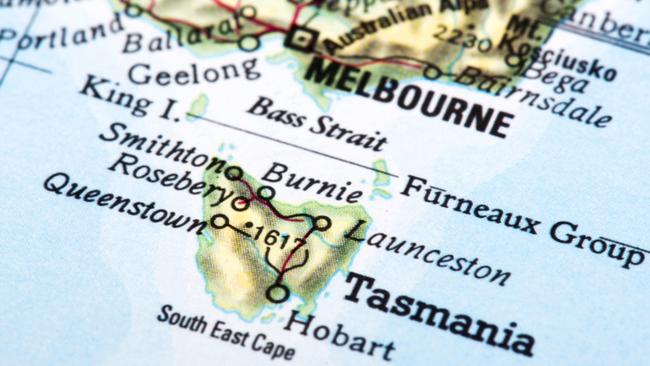Tasmania should seek independence and withdraw from the federation, a historian has urged, as state border closures highlight a national “separation”. VOTE IN OUR POLL >>
Secession from the rest of the country has been suggested by past Tasmanian premiers and former federal minister Michael Hodgman, but the economic costs of withdrawing has long prevented any move.
Tasmanian historian Reg Watson said Tasmania suffered “substantial” financial loss when it came to federation in 1901.
He said an independent Tasmania once thrived with “healthy” exports to the mainland and Britain and said “we were earning loads from our custom tariffs”.
“We controlled our own postal, telegraph and communication systems. We had our own flag, military force and navy. We knew no great debt and we enjoyed one of the highest standards of living in the world,” he said.
“Federation has not been kind to Tasmania and the state has been constantly overlooked, constantly looked on as the poor person’s state.

“I believe independence would be difficult now our manufacturing industry is gone, but it is possible.
“I think we can easily do well. Switzerland and Taiwan which are similar in size to Tasmania have become very prosperous with innovation, and we can too.”
A Tasmanian withdrawal from the federation would require a constitutional change through a referendum which would need approval from a majority of Australian states.
In the 1980s, both Labor Premier Doug Lowe and Liberal Premier Robin Gray seriously considered seceding and in the following decade the First Party of Tasmania was formed, which aimed for Tasmanian secession.
Mr Watson said a raft of changes would be needed for a secession to be viable including the establishment of a defence force and an immigration department.
He said Tasmania could also create its own currency to mitigate shortcomings associated with the GST distribution it would lose through a secession.
But Tasmanian economist Saul Eslake said Tasmanian independence “would be a bad thing because of the financial support we would lose from the rest of the country”.
“We would lose social security benefits, which in a sense is funded by mainland taxpayers,” he said.
“And if we had our own currency, it would be worth less than the Australian dollar because our productivity is lower. I suspect we import more from the mainland and overseas than we export.”
Tasmania – which holds 2.1 per cent of the country’s population – has been envied by other jurisdictions for its 3.7 per cent share of the GST.
By contrast, Western Australia, which homes 10.4 per cent of Australians, get 4.9 per cent of GST.
Tasmania has also at times been criticised for its economic costs on the rest of the country.
In 2018 then NSW Liberal Democrats senator David Leynohelgm called for Tasmania to be thrown out of the Australian Federation, calling it a “beggars state”.
Mr Leyonhjelm criticised states that received more GST revenue than was raised within their own borders.
He yesterday lashed out at Tasmania’s “strong opposition to development”.
“The issue is Tasmania is a state that has five guaranteed members in the House of Representatives and 12 senators, yet it’s financially mendicant – dependent on the rest of country,” the former senator said.
He said a Tasmanian secession would chiefly benefit mainland Australia but said it would “wake Tasmania up to start wanting investment rather than turning it away”.
His comments follow the release of a Deloitte Investment Monitor report which showed the state had $8.7 billion worth of private and public sector building projects either under construction, committed to, or being considered.
It follows pressure from Prime Minister Scott Morrison on state leaders to open borders to help propel local economies amid the pandemic.

Mr Watson said COVID-19 had underlined the independent priorities of states.
“I’ve been astounded by the current times. It seems like we’re not a united country anymore with states closing borders against states – I think it’s very dismal that we’ve acted in separate ways,” he said.
Despite historical and recent jostling between state premiers and the Commonwealth, the federation has remained indissoluble.
Western Australia has been the only jurisdiction to make a serious attempt at seceding when a majority of its residents voted to withdraw in 1933, but the move was rejected by the UK Parliament.
Constitutional law expert and Tasmanian Law Reform Institute director Brendan Gogarty said “unless things dramatically change” a Tasmanian secession is “not functionally impossible, but practically impossible”.
“If we did secede unilaterally it would not be legally valid within the rest of the Commonwealth, and even if the Commonwealth didn’t send in an occupying force to remedy matters we would not be able to engage in trade and commerce with the mainland and would not be a recognised state for the purposes of international law,” he said.
Premier Peter Gutwein yesterday put to bed any idea of a Tasmanian secession, saying “no, we are not considering seceding”.


Add your comment to this story
To join the conversation, please log in. Don't have an account? Register
Join the conversation, you are commenting as Logout
New Lark chief’s bold vision for Tassie spirits
Following the multimillion-dollar success of Four Pillars Gin, StuartGregor steps into Tassie’s most storied whisky house, with big plans to make Lark Distilling Co. – and Tasmania – shine internationally
Ultimate guide to what’s on in Tassie this summer
Summer is coming! Make the most of the warmer weather with our go-to summer events guide – it’s packed with must-do Tassie activities to enliven your social calendar and kickstart 2026 in style